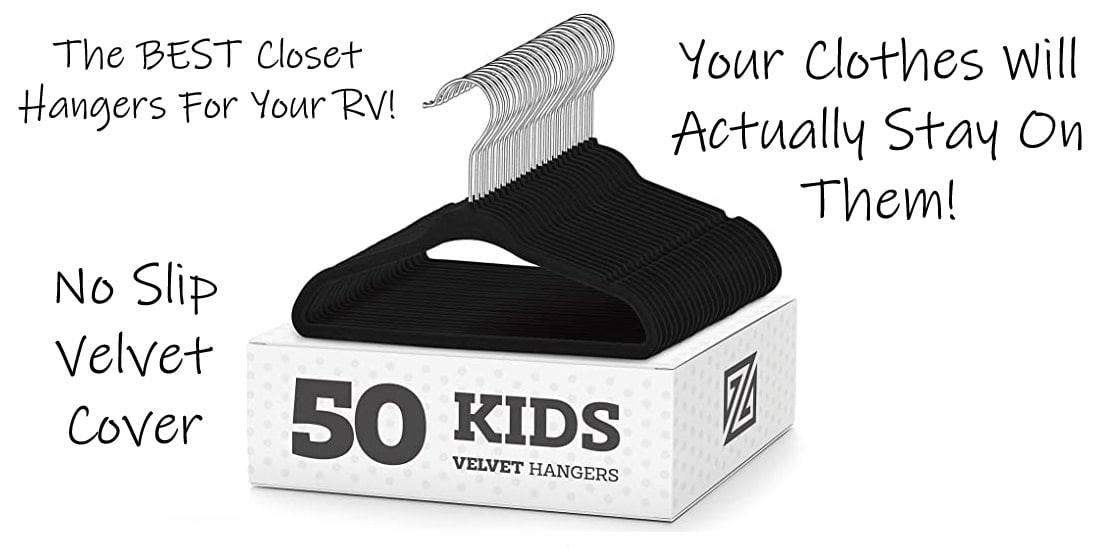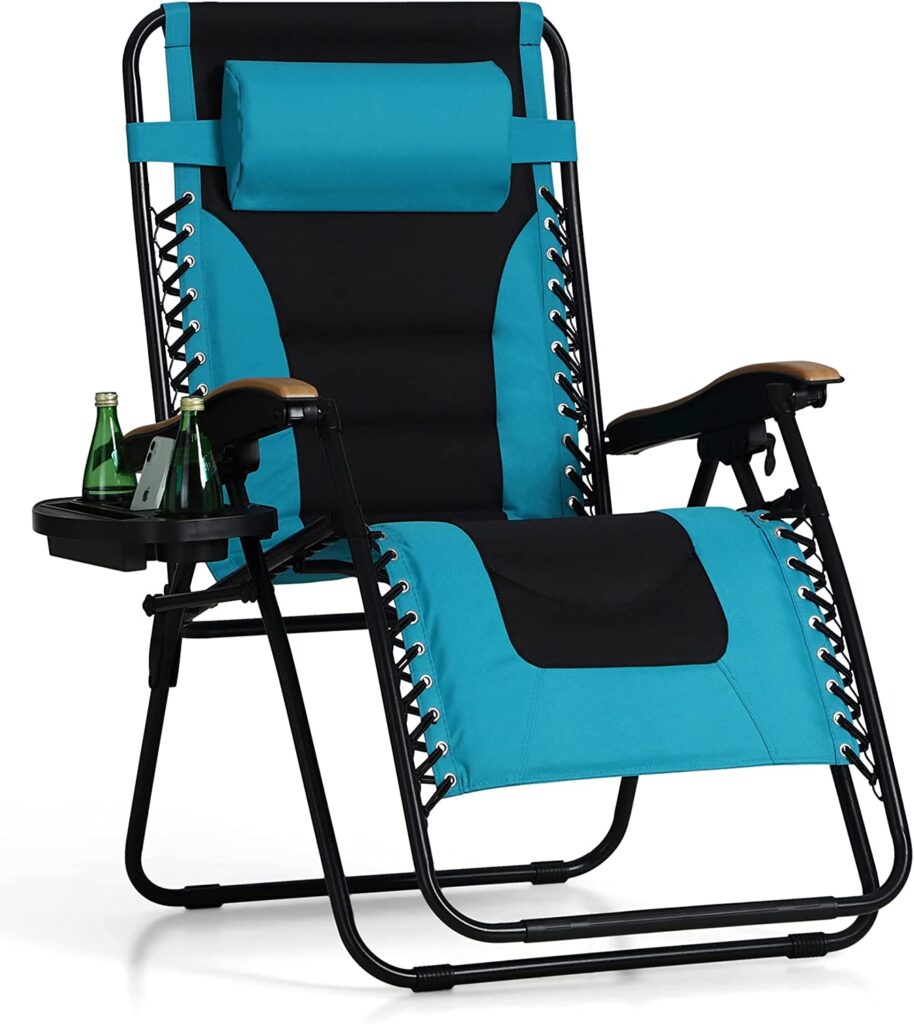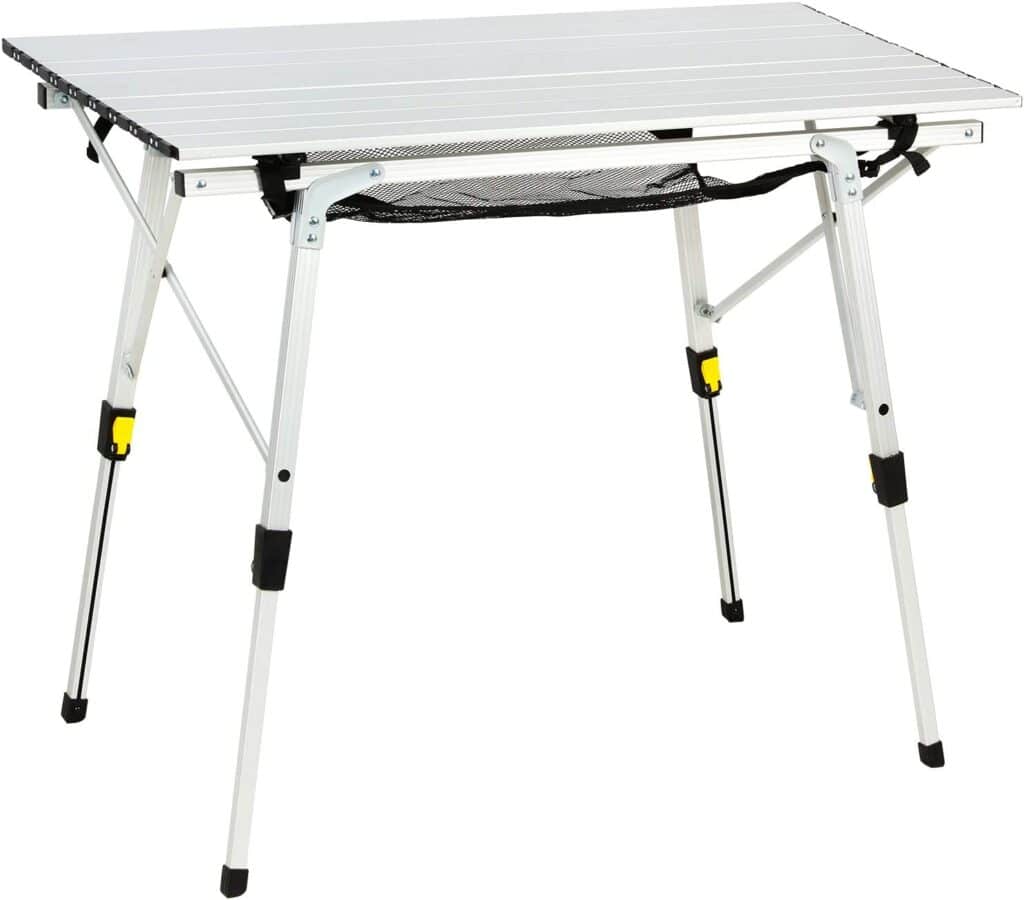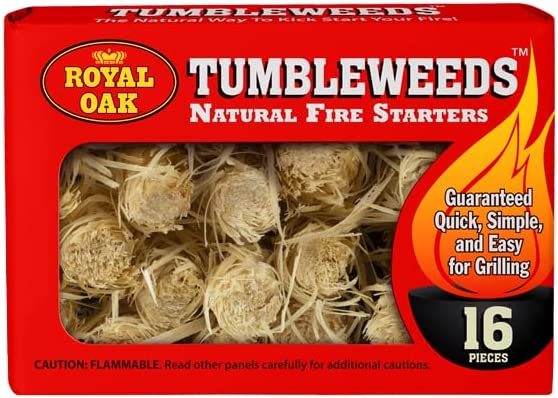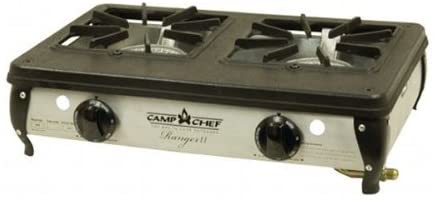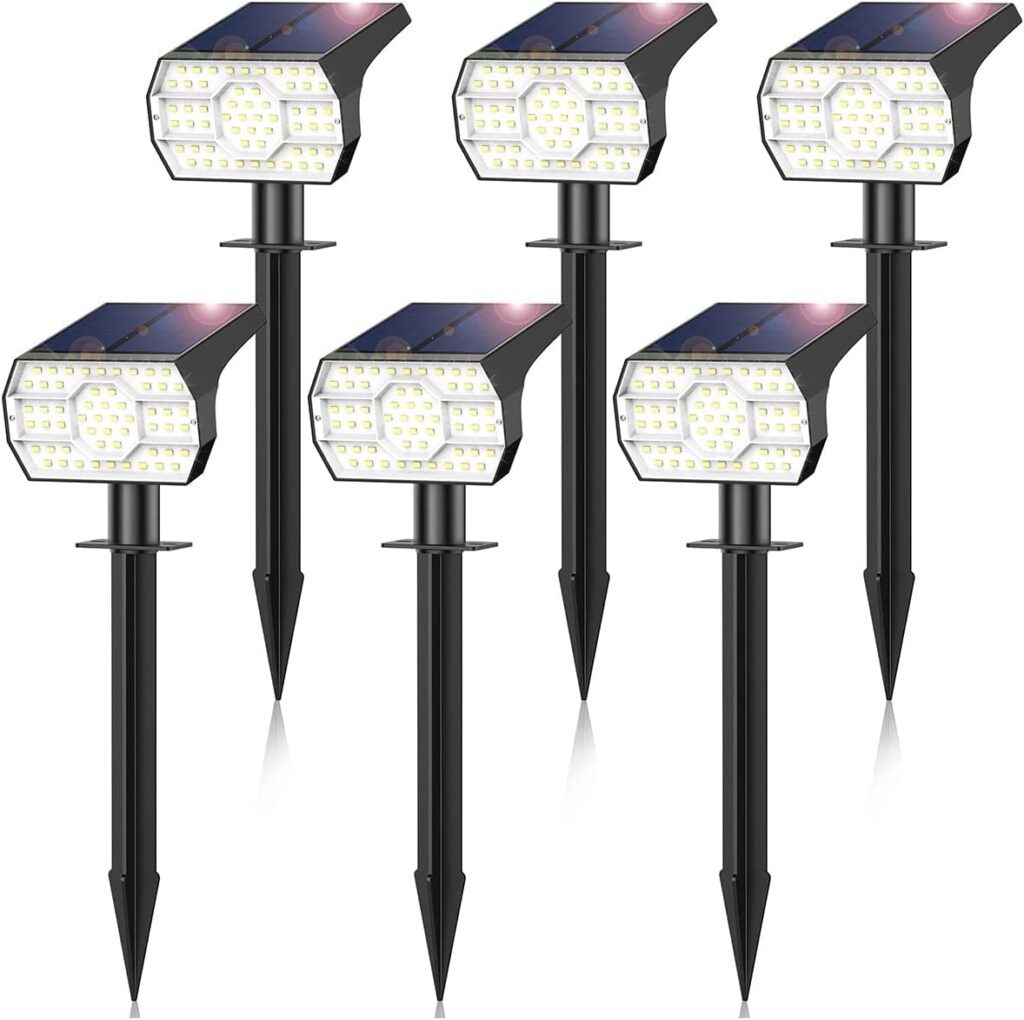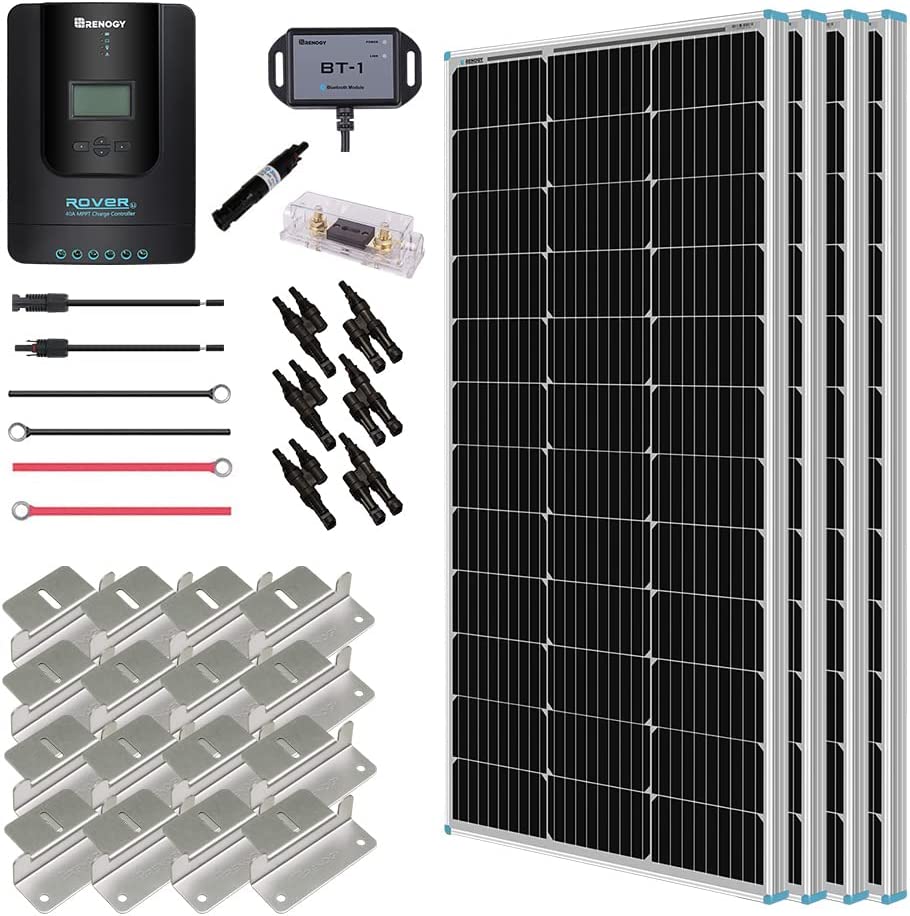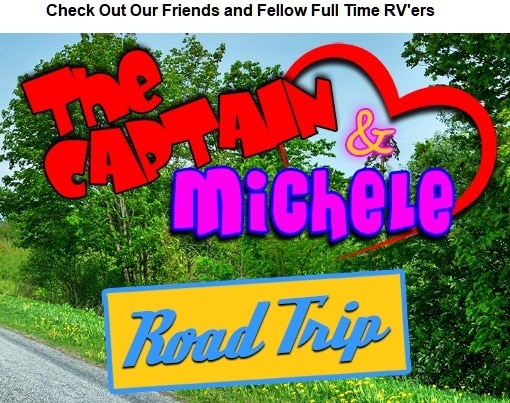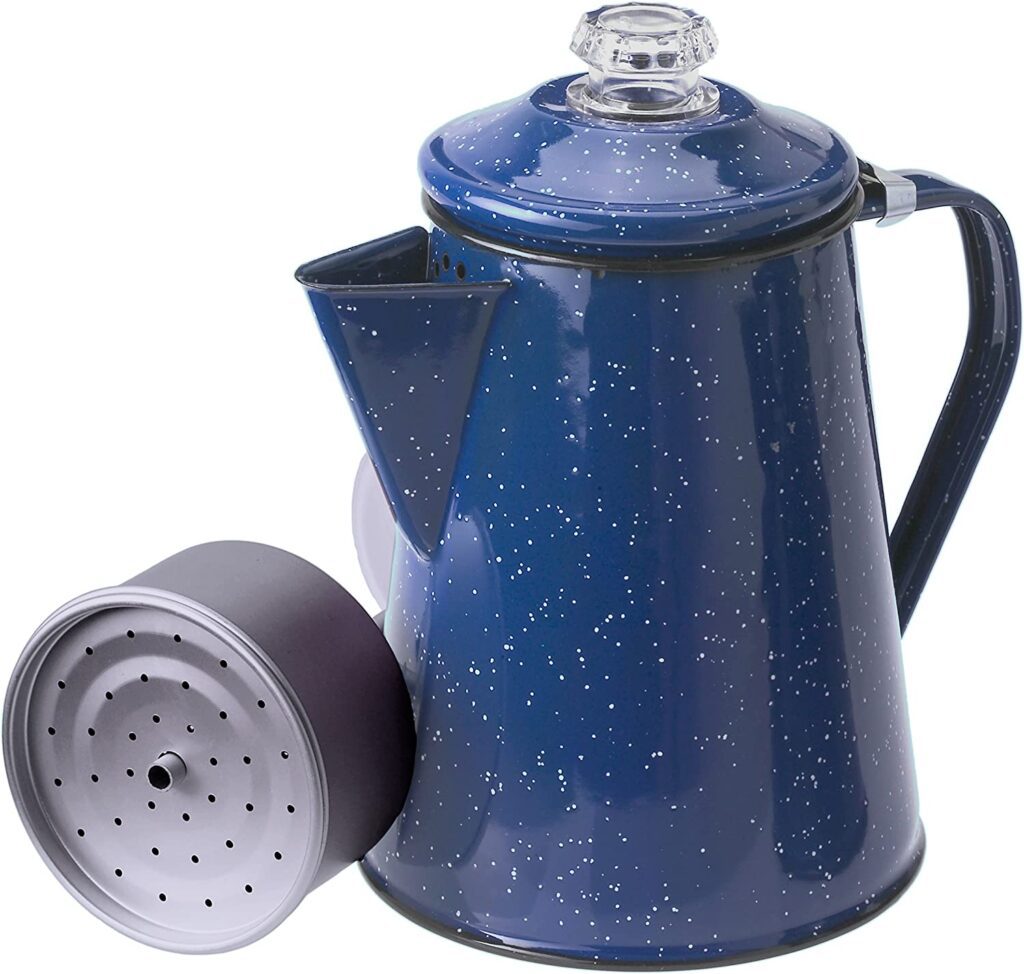We’ve been doing quite a bit of boondocking and dispersed camping since visiting home back in July. When we initially hit the road, we thought we were prepared for dry camping, but quickly learned that we were more than a little unfit for the task.
Dispersed camping, boondocking and dry camping are all RV terms for camping outside of a campground. Most of the time it is on BLM land or in a National Forest all by yourself, or in a designated camping area with other campers.
That being said, we have done several upgrades to the camper, learned how to find good locations, and even created a list of our Boondocking Essentials, which is what I wanted to share with you today. So let’s get right into it…
#10 – Folding Chairs
For most RV’ers this is something that we already have in our camper. And although they are really nice to have when you’re at a campground, they become even more necessary when you’re boondocking. While some dispersed camping locations do provide a picnic table to sit at, most of them do not. Unless you plan to spend your entire day and night in your camper, you should make sure that you’ve packed a comfortable chair to sit in outside. Doug and I actually have 3 different style chairs packed away in our monstrosity.
Now, I wouldn’t really recommend that everyone have 3 different types of chairs at the ready, I would suggest that you have one for each person in your party, plus 2 extra’s. Each person in the camper should find, and bring, a chair that they’re most comfortable in. We have anti-gravity chairs for lounging, chairs with a side table for sitting around the fire, and 2 beach chairs for when we just want to sit outside and enjoy the weather without laying down and falling asleep in our lounging chairs.
Why do we suggest bringing an extra 2 chairs? There are actually 2 very different reasons… The first is simple. If someone’s chair breaks, you have a spare (or 2). I’ll throw this in there too – if someone finds their chair extremely uncomfortable that day, they have another option. But the second reason isn’t as obvious. You should bring (and put out) 2 extra chairs because it’s more inviting if you happen to meet someone.
Doug and I learned this trick while down in Florida from our friend Mark who travels alone. When we asked him why he had so many chairs out, he said, “if I didn’t, where would you sit?” His theory, and now ours too, is that – if you meet someone while camping they will feel more comfortable if you have a place for them to sit. Otherwise, the conversation may end when their legs are tired of standing. All campers are out here doing the same thing as you. You probably have a lot in common. And even if you don’t, you at least have camping as a topic of conversation and have made a single serving friend while out enjoying your adventure.
(Also Read: How To Have A Good RV Shower While Boondocking)
#9 – Outdoor Folding Table
Like I said before, there is likely not going to be a picnic table just hanging out where ever you decide to set up camp for the evening. You’re going to need a place to put things down instead of on the ground. This will come in handy if you want to eat outside too. You can put all of your camp chairs around it and enjoy your meals here. Once again, most of us have some kind of folding table in our camper already, but it becomes much more essential when Boondocking.
#8 – Firewood / Fire Starters
I want to preface this category by saying that there are times when there is a ban on fires in different parts of the country. So read any posted signage, speak with a camp host, or do your due diligence and know the current ruling before you start a campfire.
That being said… You can scavenge and pick up dead fall where ever you decide to camp. But what if you’re somewhere that doesn’t have any? When we camped at The Wall at the Badlands in South Dakota there wasn’t a tree in sight. There was no wood laying on the ground for us to use. You will need to bring/ purchase firewood. When dry camping having a fire going serves multiple purposes. Alone from the ambiance that it provides, a fire is great place to warm up on cold days, and can also be where you do a lot of your cooking.
You also want to make sure that you have a way of starting the fire. Not just a lighter. If you are relying on dead fall and it’s been raining for the last week, everything is going to be wet. Getting that fire started is going to be more difficult. We carry quick start charcoal and tumbleweeds to start our fires. Charcoal is great to get a hot bed of coals going at the bottom of the fire. It also reduces the amount of smoke you get when adding additional wood to the fire.
#7 – Outdoor Stove / Grill
Yes. Your camper likely has a stove inside. Yes. You can cook over the fire. But we’ve found that having an outdoor stove has been vital to our boondocking. When it’s 90 degrees out and you’re fighting to keep the inside of your camper cool, the last thing you want to do is start cooking a meal inside. It’s almost instantaneous that the temperature starts to rise in there. And there’s just some things that are more difficult to cook over a fire… like small vegetables. I’m not saying it’s impossible to cook everything over the fire. But going back to that 90 degree day – Do you really want to be standing over a camp fire to cook everything that you plan on eating? Having a camp stove has eliminated the rising heat in the camper and prevented us from cooking pancakes over the fire. I can use my same pots and pans from inside, and we don’t have to worry about making sure the fire is at the right temperature for cooking.
#6 – Solar Lights
When you’re boondocking, it isn’t likely that you will have any ambient light source at night other than the moon. If you start using the outdoor lights on your camper, you’re going to drain your batteries down faster. Once your fire is out for the evening, it get’s pretty darn dark, and it happens really quickly. Having solar lights has been indispensable. Just being able to see to get back into the camper is wonderful, but more than that, they are a security feature. Think about your stick and brick house… You have an outdoor light flip on if you hear an intruder or need to run outside and grab something. In a camper, a lot of your storage is accessed from outside. If you need to get something once it’s dark outside, the solar lights provide enough light to do so. They also provide enough light to see a bear sitting outside your camper when the dog needs to go to the bathroom in the middle of the night. I think solar lights should be used in conjunction with a flashlight for more direct light. But the solar lights provide enough light that you aren’t opening your camper door into pitch blackness.
#5 – Low Flow Showerhead
Water conservation is a reality when doing any kind of dry camping. The only water you have is what you brought with you. If you’re camper only holds 15 gallons of fresh water, well then, that’s all you’ve got. You need to be conscience of your water usage. One area that we have been able to seriously conserve water is by upgrading our showerhead to one that is low flow. A good low flow shower head will reduce the gallons per minute pouring out while you’re trying to rinse off. You are also going to want to make sure that it has a pause feature. Like this, you can get in, get wet and hit that pause button while lathering up, and turn then just quickly un-pause it when you’re ready to rinse. The pause button allows you to keep your water temperature and save a few gallons of water while you’re in the lathering phase of your shower. It works out much better than turning the water completely off and then back on again when you’re ready.
#4 – Water Acquisition
Yeah. I know. I already pointed out that you’ll only have whatever water you’ve brought with you. But what if you could get additional water? We’ve been able to seriously extend our time in dispersed camping locations because we’ve been able to procure additional water and get it into our fresh water tank. Depending on the set up of your camper this can be done several ways. We use a combination of little tricks.
You can buy bottled water at the grocery store that you can use for drinking and cooking. This keeps the water in your tank for showering and toilet usage. We most definitely do this.
If your camper is set up to just pour water into your fresh water tank, you can carry buckets, or collapsible containers for fresh water transport. Although your dispersed camping location may not have water readily available, you may be able to obtain potable water at a local public well, or even a gas station. Now all you need to do is pour that water into your camper’s tank and you’re good to go for another few days.
In our case, our camper requires the water be pressurized to get it into the fresh water tank. Doug is quite ingenious with rigging stuff up. He had upgraded our water pump to a quieter unit before we even moved into the camper. For some reason he thought that he should keep the old water pump. At the time, this was probably just in case something went wrong with the new one he had installed, we would have a spare. Well, that spare water pump has been a lifesaver. We have been able to locate public wells, and fill 5 gallon buckets with fresh water, and then use that old water pump to get the water into our tanks. You can check out Doug’s bucket build here, as it is way out of my realm of being able to explain for everyone.
#3 – Electricity
I think this category should probably be labeled energy management, but it all boils down to your electricity. First and foremost, you should not plan to do any kind of boondocking with your camper straight from the factory as is. You will require the purchase of additional items to make camping like this an option. The easiest solution sounds like a generator, and we will both agree that a generator is the simplest solution to providing electric to your camper. We happen to love our Harbor Freight Predator 3500. But you may not be able to run a generator for 24 hours. Even in National Parks and Forests, there are sometimes quiet hours that you need to adhere to. At the Clark Canyon Reservoir we had quiet hours from 10pm until 7am. In Glacier National Park, we could only run the generator from 8am-10am, 12pm-2pm, and from 5pm to 7pm. So although a generator is the simplest way to get electric into your camper, it shouldn’t be relied on as the only source.
We have also added solar panels to our rig. Now, we didn’t go crazy with adding enough solar to run air conditioner units, we just added enough solar panels to keep our batteries charged. Doug goes into a lot more detail with what unit we opted for and how it’s performing for us in his article RV Solar Install For Normal People. But the bottom line here is that you need to plan for energy management when out dry camping.
#2 – Percolator Coffee Pot
This item on our list may be a bit of a joke… But not for us, and maybe not for a lot of you too…
Coffee is a necessary evil for both Doug and I in the morning. Admittedly, I drink more coffee than Doug. And likely more coffee than a dozen people combined, but I can make it through waiting for a pot to brew in the morning. Doug on the other hand needs to roll out of bed to the coffee being brewed in his mouth or he’s a cranky camper. Believe it or not, that little coffee pot on your counter sucks up a LOT of electricity. When you’re out boondocking you’re batteries may have enough charge left in them to not be setting off any kind of alarms, but if you have a power inverter, the moment you turn that coffee pot on, all of that can change. Remember, your generator hasn’t been running all night, and the sun hasn’t been throwing all of that energy into your solar panels either. If you’re anything like us, you’re awake before you’re allowed to crank up the generator and now you need your coffee. A small percolator coffee pot on your stove (indoor or outdoor) will get you that warm delicious caffeinated nectar of the gods quickly so you can go about enjoying your dispersed camping location without scaring off all wildlife with the horns that start growing out of your head. (P.S. This also works great for boiling water for you tea drinkers.)
#1 – A Back-Up Plan
It doesn’t matter where you plan to head out to for your dispersed camping experience, you will absolutely never know what everyone else on the planet’s plans are. You can drive past the same location 100 times and never see anyone there, but when you get there, it could be full. There’s also the case that there may not be a place big enough for your camper. For us, we are 65 feet total with the truck and camper. That’s a LOT of space! There may be another area for you to set up in right down the road, but there may not be either. You should always have a back up plan. Sometimes that back up plan will need to be the campground 30 minutes further down the road. And sometimes, it will have to be to just keep driving around the National Forest until you can find another suitable location. But ALWAYS have a back-up plan.
With our list of must have’s and careful water and electric management we have been able to extend our boondocking to 14 nights without needing to stop in a campground. If you have any essential dispersed camping items that you think belong on the list, we would love your input. We are still relatively new to longer term boondocking and would love to learn more about how you’ve been able to extend your stays so we can continue to keep our RV Life Worth It.


